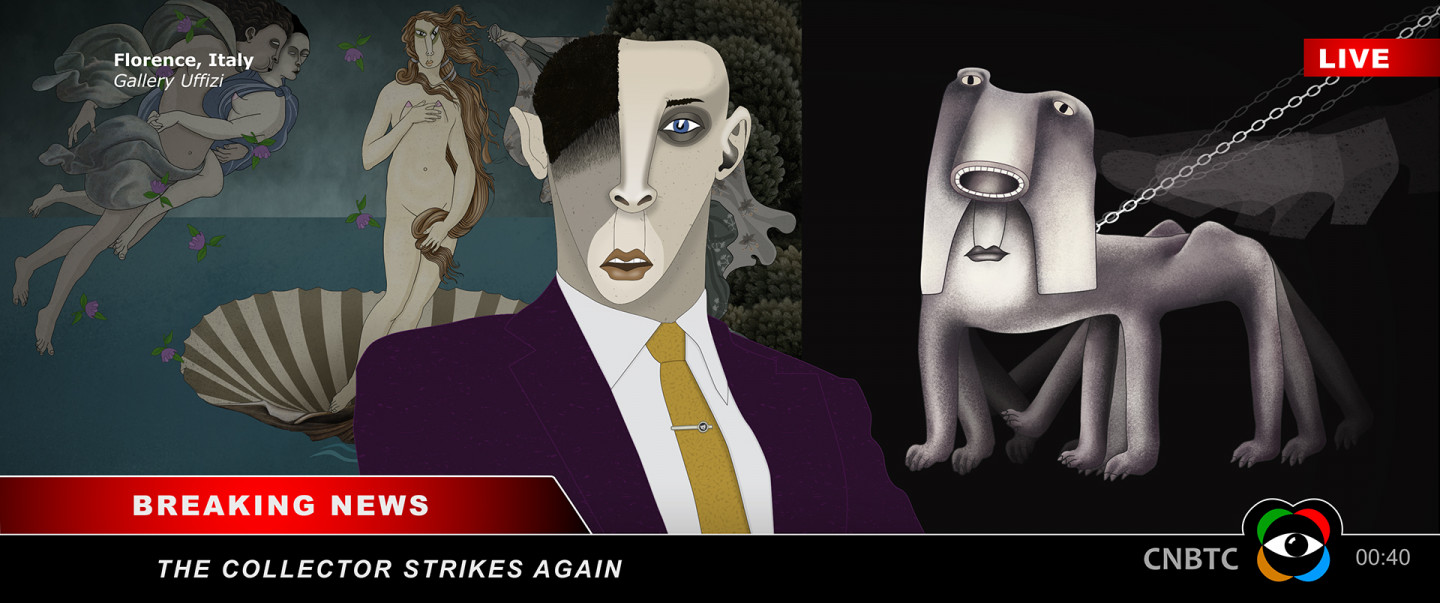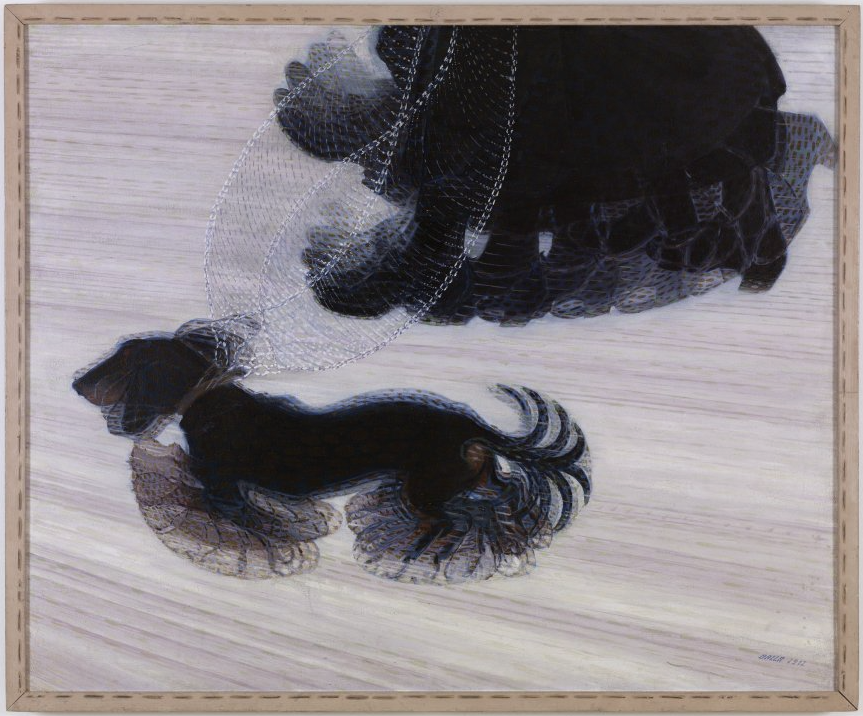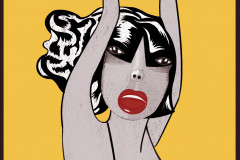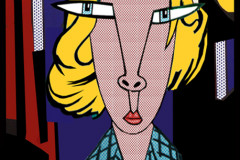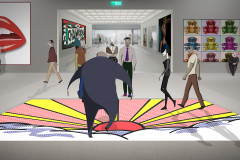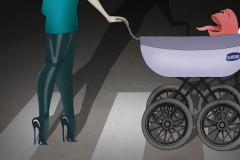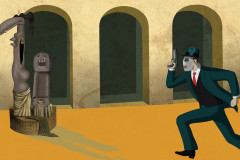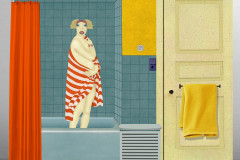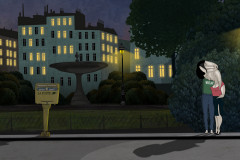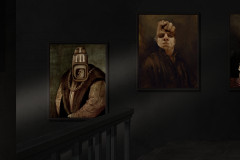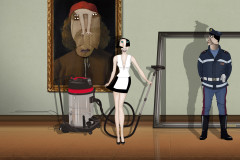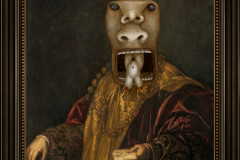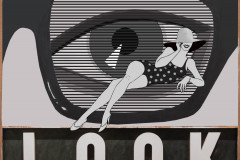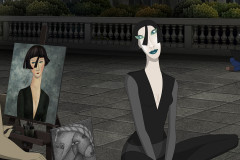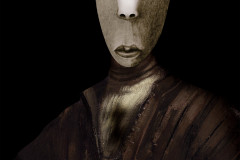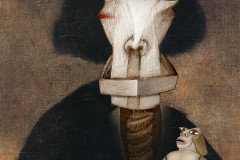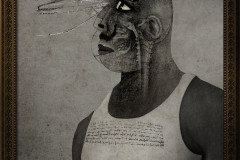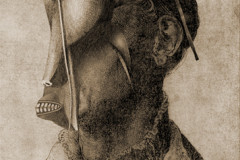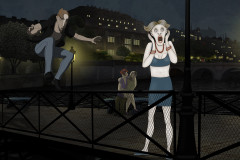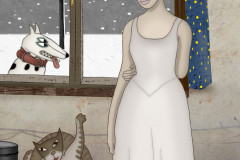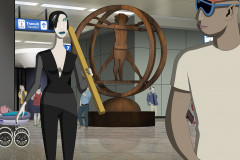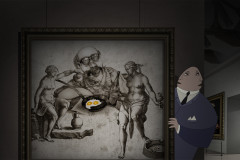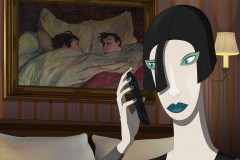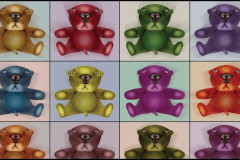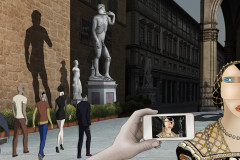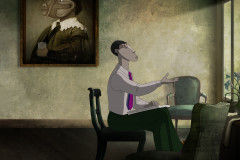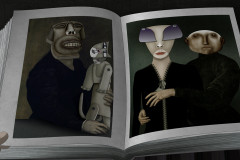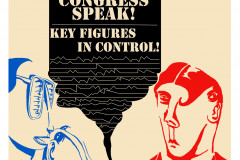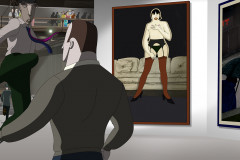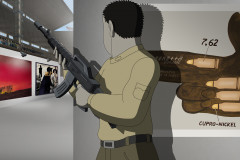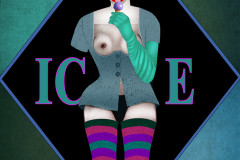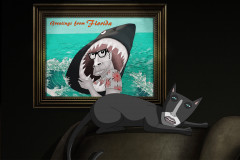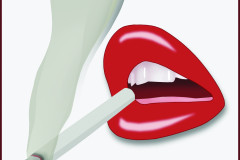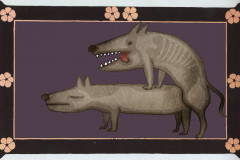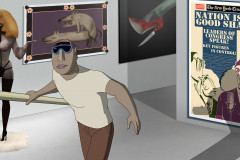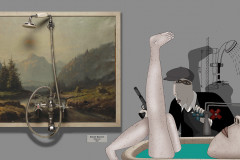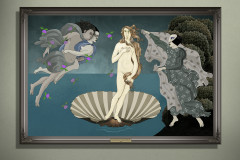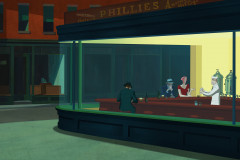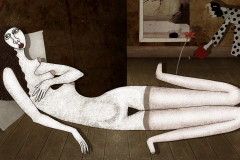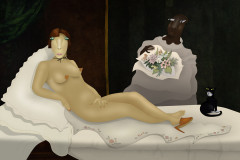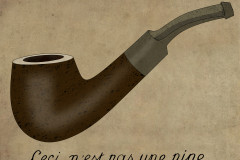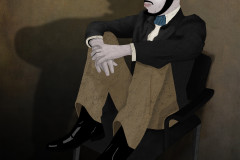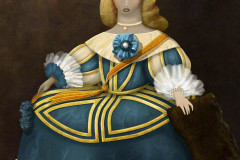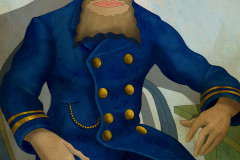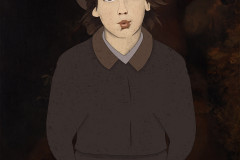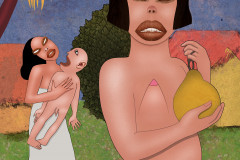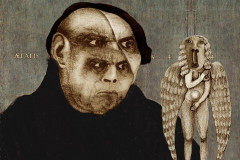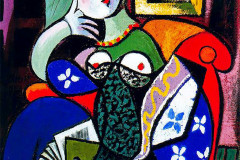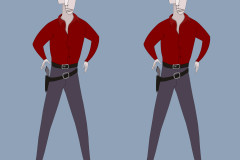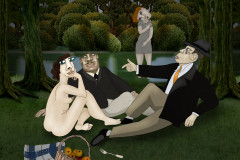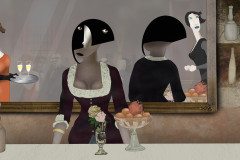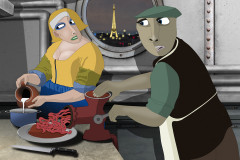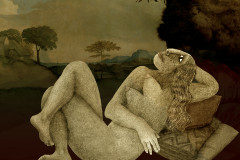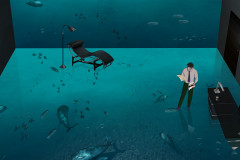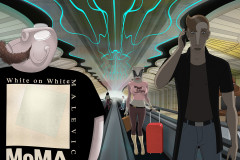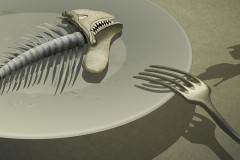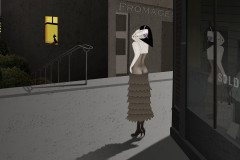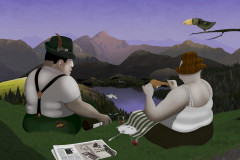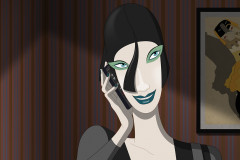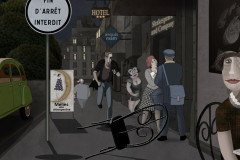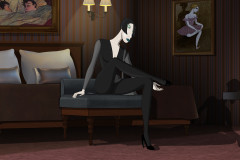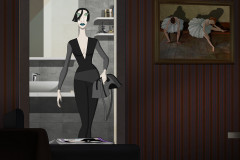Balla, Giacomo (1871-1958): A pórázon sétáltatott kutya dinamizmusa, 1912 (olaj, vászon, 90 x 110 cm), Albright-Knox Art Gallery, Buffalo, New York. Az olasz avantgárd irányzat, a futurizmus egyik legismertebb és legviccesebb alkotása, amely a mozgás újszerű megragadására törekszik. Hiszen miért ábrázolna megmerevedett pillanatokat a művészet, amikor a modern élet pörög, mint a Ruben Brandtban az események? A „soklábú” kutya és gazdájának motívuma a firenzei Uffiziből történő rablás tudósításában tűnik fel az élőben bejelentkező riporter mögött.
A művészet megújítására törekvő avantgárd mozgalmak előszeretettel fogalmazták meg céljaikat harcos kiáltványokban. A nevükben is a jövőbe tekintő (és a múltat tagadó, azt szenvedélyesen rombolni vágyó) futuristák 1910-es festészeti kiáltványában ez áll: „Minden mozog, minden száguld, sebesen forog. Egy alak sohasem mozdulatlan előttünk …, a mozgásban lévő dolgok megsokszorozódnak, átalakulnak, ... Így egy futó lónak nem négy lába van, hanem húsz." Balla festménye ennek a tézisnek gyakorlatba való átültetése. Szinte halljuk a kis tacskó totyogó lépteit, a gazda cipőjének kopogását, megelevenedik a nagyvonalúan lengedező póráz. A kép tele van ritmusokkal, dinamikával. Ezt erősítik az elmosódó körvonalak, a meglepő, véletlenszerűnek tűnő képkivágás és a háttér/talaj átlósan húzódó vonalai, amelyek közé a jobb alsó sarokban a festő szignatúrája is átlósan került fel. Valóban minden mozgásban van, még a kép keretén is szaggatott vonalkázás húzódik körbe. Nincs megállás.
Balla, Giacomo (1871–1958): Dynamism of a Dog on a Leash, 1912 (oil on canvas, 90 x 110 cm, Albright-Knox Art Gallery, Buffalo, New York). One of the most iconic—and most humorous—works of Italian Futurism, this painting attempts to capture motion in an entirely new way. After all, why should art depict frozen moments when modern life whirls past at full speed—just like the events in Ruben Brandt, Collector? The image of the “many-legged” dog and its owner appears in the film behind a live news reporter covering the theft from the Uffizi Gallery.
Avant-garde movements aiming to revolutionize art often formulated their goals in manifestos. The Futurists—whose very name looked toward the future while vehemently rejecting the past—wrote in their 1910 Futurist Painting Manifesto: “Everything moves, everything runs, everything flows rapidly. A figure is never motionless before us… things in motion multiply, change… Thus, a running horse has not four legs, but twenty.” Balla’s painting puts this thesis into practice. We can almost hear the little dachshund’s scurrying paws, the owner’s shoes clicking, the leash swaying between them. The image brims with rhythm and dynamism.
This effect is heightened by blurred outlines, a surprising, seemingly random cropping of the scene, and the diagonally drawn lines of the ground and background—which even include Balla’s signature, written diagonally in the lower right corner. Everything is indeed in motion—even the painting's border is surrounded by dashed lines. There is no pause.






